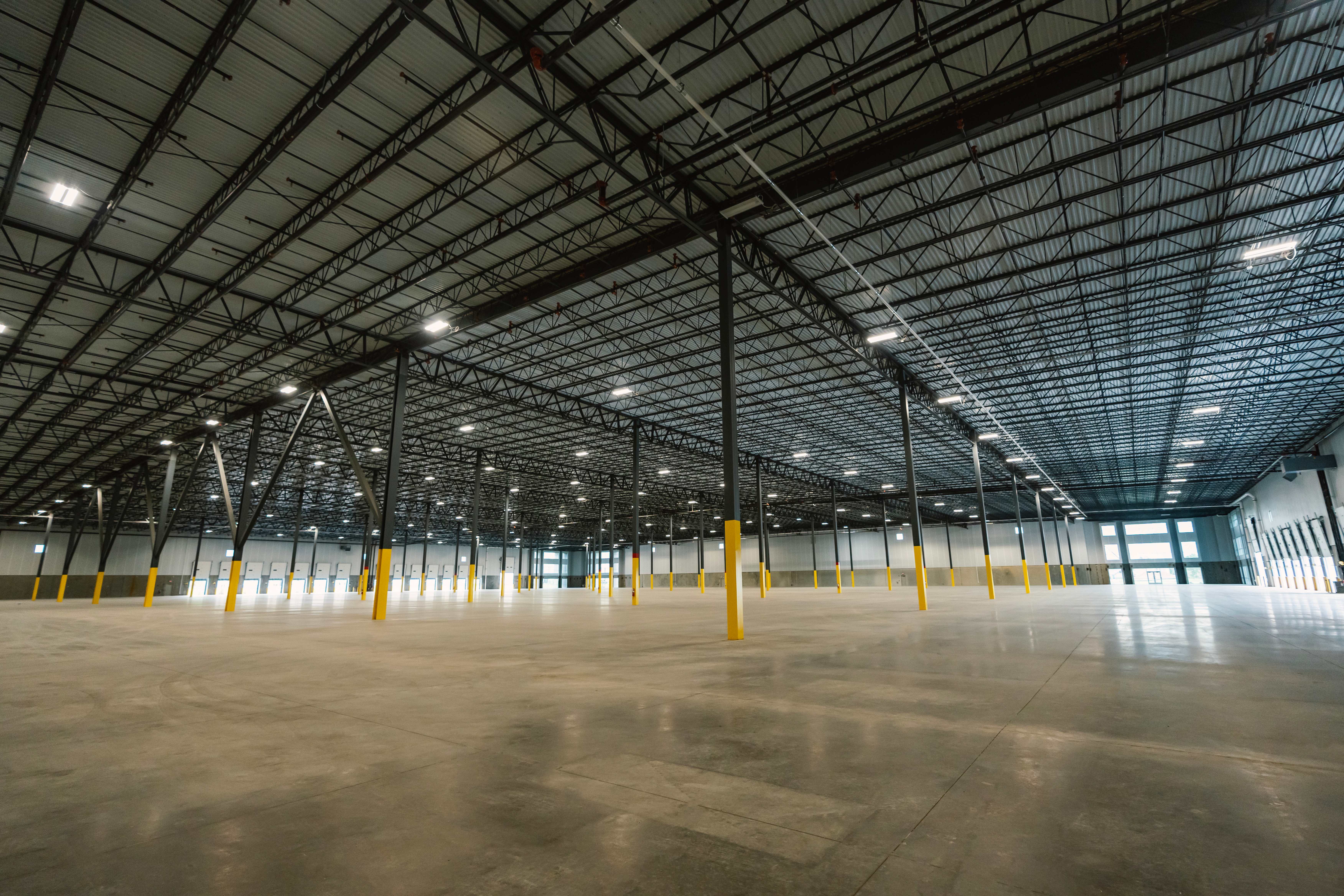

In today’s fast-moving supply chain environment, warehouse strategy can’t be one-size-fits-all. Whether you're managing property, leasing space, or optimizing logistics, aligning warehouse design and operations with the size and needs of the business it serves is critical.
A startup selling handmade goods doesn’t need the same warehouse features as a global retailer with millions of SKUs. Yet too often, businesses default to what’s available rather than what actually fits.
The right approach? Tailor your warehouse strategy based on two key factors: warehouse size and client type.
Warehouse Size: One Label Doesn’t Fit All
Warehouses typically fall into three categories. Each brings unique challenges—and demands a different operational mindset.
Small warehouses, typically under 50,000 square feet, are well-suited for startups, regional distributors, or niche e-commerce brands. These facilities must prioritize space efficiency, often making use of vertical racking systems, narrow aisles, and modular shelving to maximize every square foot. Because resources tend to be lean, small warehouses benefit from streamlined inventory systems that use barcoding and real-time tracking to minimize errors and shrinkage. Staff often wear many hats, so cross-training is essential to maintain flexibility during demand spikes. Layouts should support fast turnaround, especially for just-in-time (JIT) fulfillment models where speed can be a competitive advantage.
Medium-sized warehouses, ranging from 50,000 to 200,000 square feet, serve businesses that are scaling up and need more structure without sacrificing adaptability. Layouts in these facilities are often designed around operational flow, with U- or L-shaped zones that clearly separate picking, packing, and shipping activities. As order volume increases, integrating warehouse management systems (WMS) becomes crucial to support real-time inventory visibility and smarter replenishment decisions. Workforce management also becomes more formalized, with scheduled shifts, performance tracking, and targeted training. Safety and compliance take on a greater role, requiring regular audits and well-documented protocols.
Large warehouses, over 200,000 square feet, are built for high-volume, complex operations—often serving national retailers, large distributors, or third-party logistics providers. These facilities rely heavily on automation, incorporating robotics, conveyor systems, and Automated Storage and Retrieval Systems (AS/RS) to maintain efficiency at scale. Data is central to decision-making, with AI and analytics used for everything from demand forecasting to process optimization. The physical infrastructure must be scalable and sustainable, featuring modular racking, energy-efficient systems, and environmentally responsible design. Roles are typically specialized—pickers, packers, forklift operators—each focused on speed, accuracy, and throughput.
Client Type: Understanding Business Needs
Warehouse needs also vary dramatically depending on the type of business being served. Understanding whether your client is a small, growing company or a large enterprise can guide everything from lease structures to layout recommendations.
Small businesses tend to prioritize flexibility. They often seek short-term leases and adaptable warehouse designs that can expand or contract with their needs. Keeping costs low is usually a top priority, so these businesses look for basic amenities—reliable security, climate control, and essential utilities—without paying for features they don’t need. Proximity to customers is also critical, as reducing shipping time and cost directly impacts their bottom line. Smaller operations often approach fulfillment aspart of the customer experience, making packaging, speed, and personalization key to brand loyalty.
Large businesses, on the other hand, require high-capacity warehousing with robust infrastructure to manage complex operations. Their facilities typically include extensive racking systems and integrate advanced technologies such as WMS, automation tools, and AI-driven optimization. Location strategy plays a major role, with warehouses often placed near major transportation hubs to streamline inbound and outbound logistics. These businesses frequently invest in custom-built spaces tailored to their unique workflows, enabling them to manage large inventories, bulk shipments, and rapid order cycles with maximum efficiency.
Operations, Fulfillment, and Strategy: Key Differences
The operational differences between large and small businesses impact nearly every aspect of warehousing. Shipping timelines vary significantly—larger companies often plan shipments six to eight months in advance, with bulk imports from overseas. In contrast, small businesses rely on just-in-time delivery models, requiring faster inventory turnover and tighter control over stock levels.
Fulfillment models also differ. While large companies use specialized teams for each stage—picking, packing, shipping—small businesses often rely on more generalist teams that can flex across multiple tasks. Brand experience plays a bigger role for smaller players, too. Larger companies may have the advantage of name recognition, but smaller businesses tend to see packaging and delivery as opportunities to impress customers and reinforce their brand identity with every shipment.
Even payment terms reveal the contrast: large companies usually operate on standardized payment cycles, whereas smaller clients may need more flexible arrangements to accommodate tighter cash flow.
Bottom Line: Strategy Starts with Fit
Choosing the right warehouse isn’t just about square footage—it’s about aligning space, technology, and operations with the business's size, model, and goals.
If you're a property manager, logistics planner, or leasing advisor, one of the most valuable insights you can offer your clients is this: warehouse strategy is most effective when it’s tailored to the business it supports.
Smaller operations thrive on flexibility, speed, and cost control. Larger enterprises depend on scalability, automation, and operational consistency. Understanding these differences isn’t just helpful—it’s essential for designing logistics solutions that actually work.
Get the alignment right, and you’re not just filling space—you’re driving business forward.